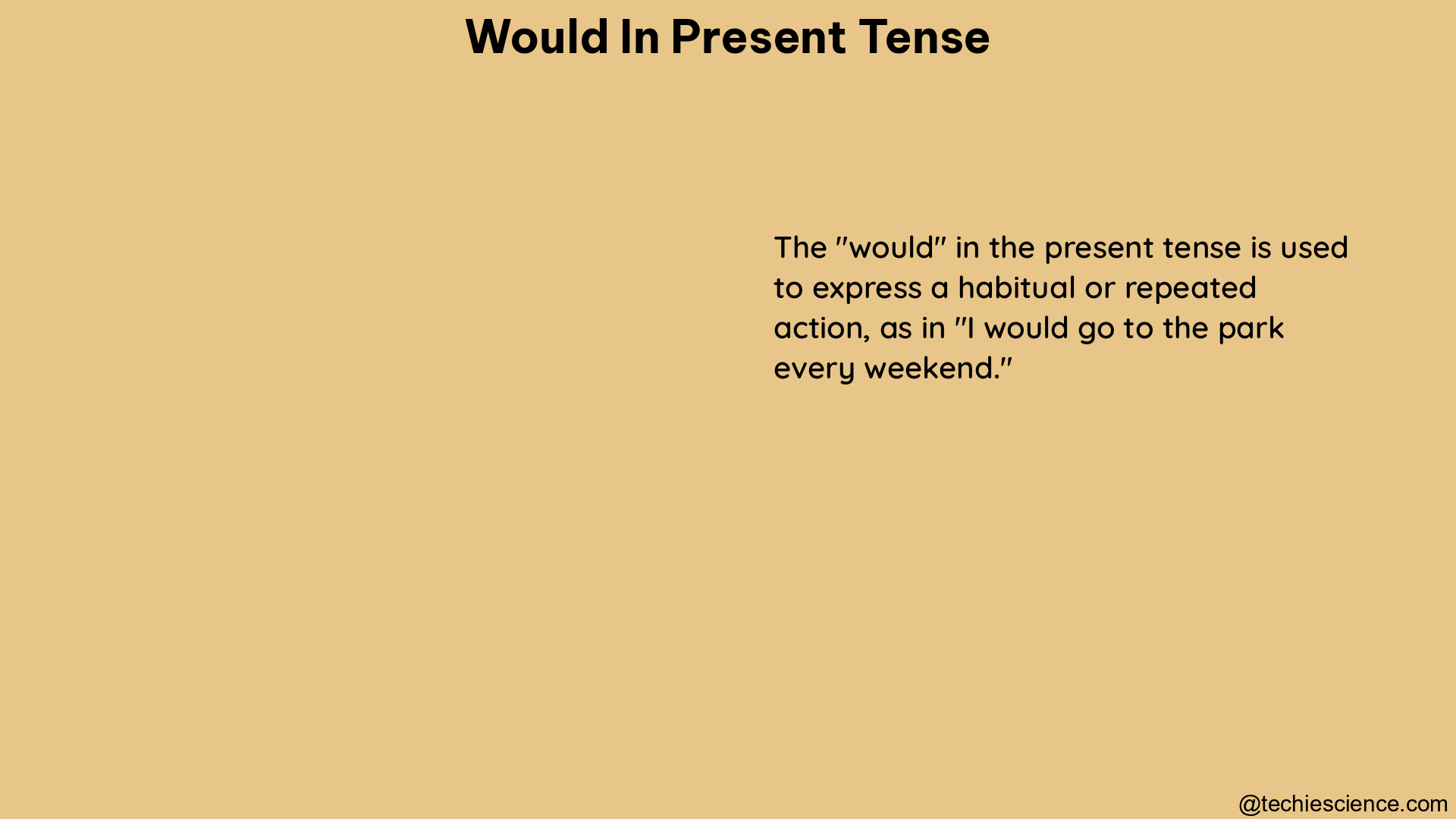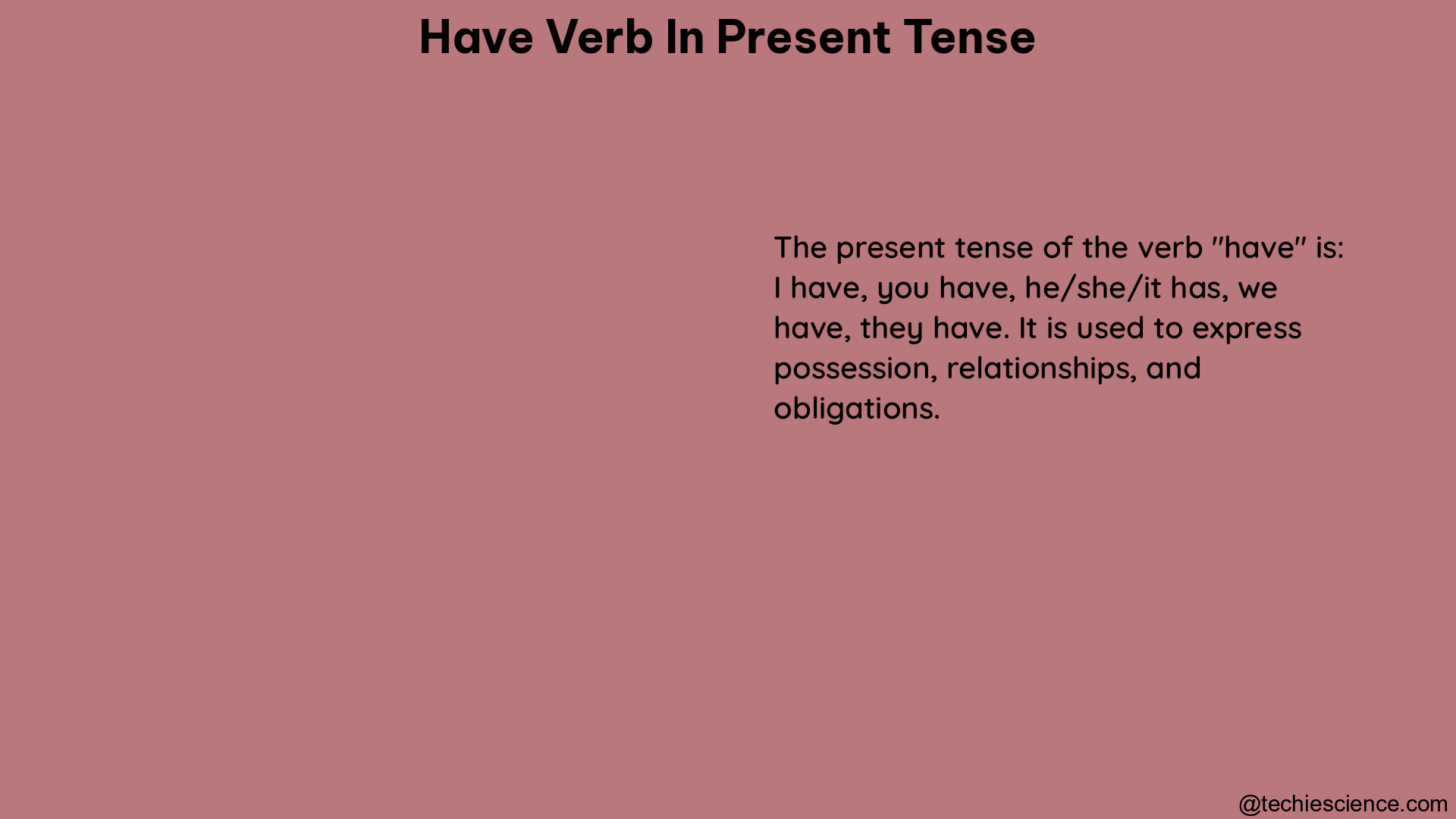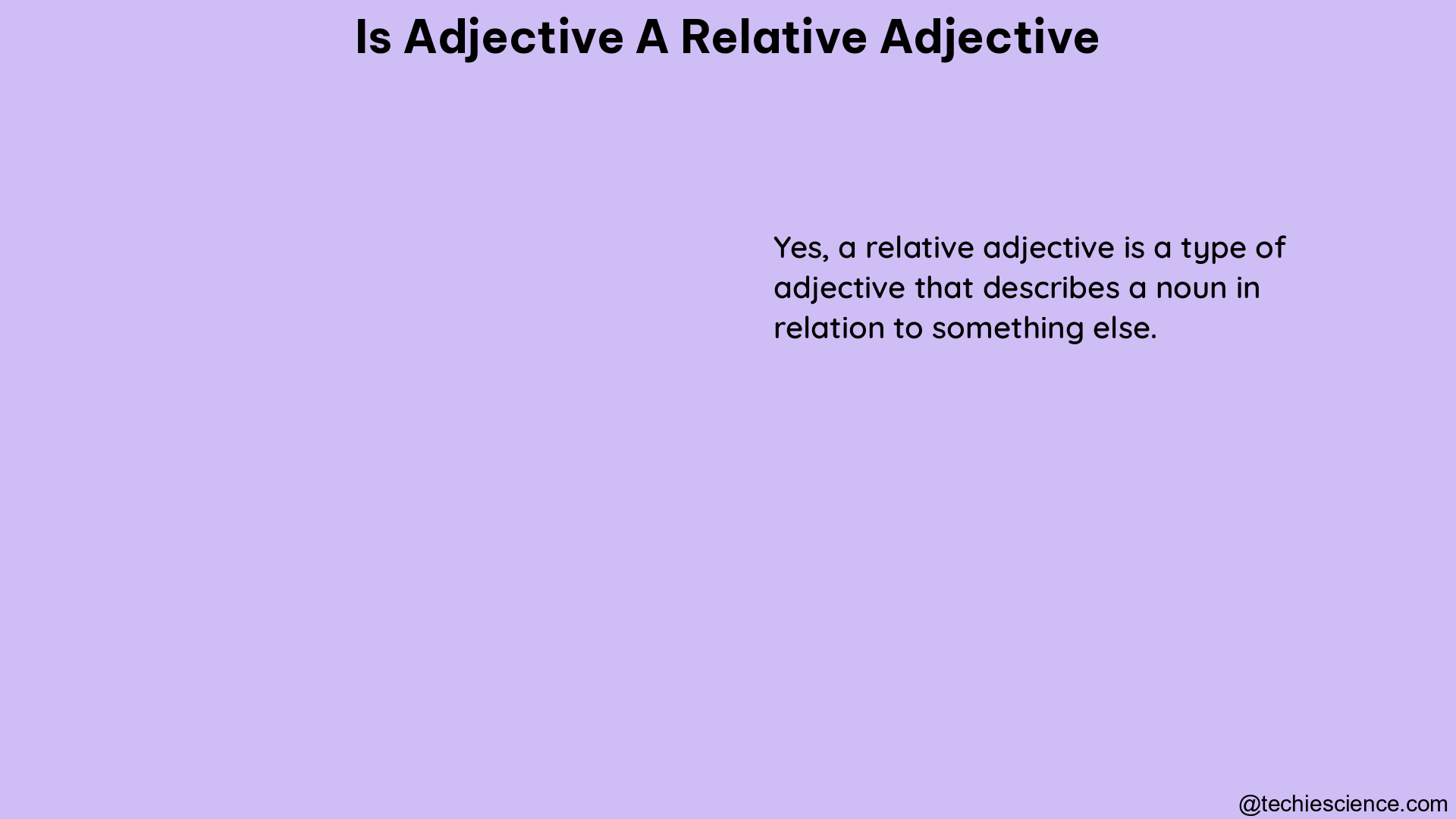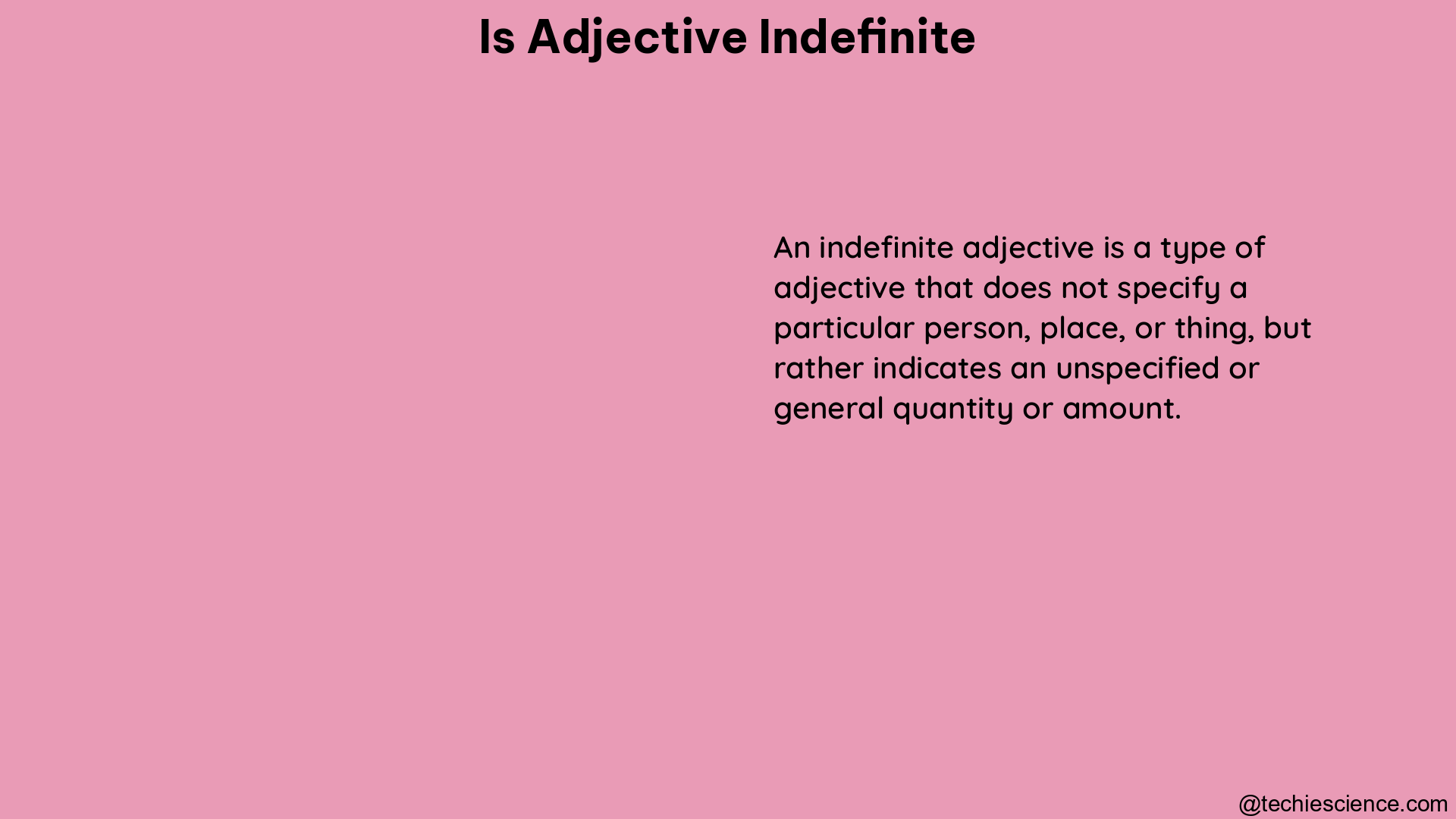An adjective is a word that describes or modifies a noun or pronoun. It provides additional information about the noun or pronoun in terms of its quality, quantity, or state. Adjectives can be singular or plural, depending on the number of the noun they are describing. When an adjective is singular, it means that it is used to describe a single noun. For example, in the sentence “The beautiful flower is blooming,” the adjective “beautiful” is singular because it describes a single flower. To understand the concept of singular adjectives better, take a look at the table below:
Key Takeaways
| Adjective |
Singular Form |
| Beautiful |
Beauty |
| Tall |
Height |
| Smart |
Intelligence |
| Brave |
Bravery |
| Happy |
Happiness |
This table provides a concise overview of some common adjectives and their corresponding singular forms.
Understanding Singular Adjectives
Singular adjectives play an important role in English grammar. They are used to describe singular nouns, which refer to one person, place, thing, or idea. In this section, we will explore the definition and explanation of singular adjectives, as well as provide examples of sentences using singular adjectives.
Definition and Explanation of Singular Adjectives
Singular adjectives are words that modify or describe singular nouns. They agree with the noun in terms of grammatical number, meaning that they are singular when the noun they describe is singular. This agreement ensures that the adjective and the noun are in harmony and make sense together.
To understand singular adjectives better, let’s take a look at some grammar rules and adjective usage related to singular nouns:
-
Adjective-Noun Agreement: Singular adjectives must agree with the singular noun they modify. For example, if we have the singular noun “dog,” we would use the singular adjective “happy” to describe it. The phrase “a happy dog” demonstrates the agreement between the singular noun and the singular adjective.
-
Adjective Forms: Singular adjectives typically have the same form as their base form. For instance, the adjective “beautiful” remains the same whether it is describing a singular or plural noun. So, we would say “a beautiful flower” for a singular noun and “beautiful flowers” for plural nouns.
-
Adjective Placement: Singular adjectives usually come before the noun they modify. For example, we would say “a red apple” rather than “an apple red.” However, there are exceptions to this rule, such as with certain idiomatic expressions or poetic language.
-
Singular Determiners: Singular determiners, such as “a,” “an,” and “the,” are often used with singular adjectives to specify the noun being described. For instance, we would say “an interesting book” or “the tall building” to indicate a particular singular noun.
-
Singular Possessive Adjectives: Singular possessive adjectives, such as “my,” “your,” or “his,” are used to show ownership or possession of a singular noun. For example, “my car” or “his house” demonstrate the use of singular possessive adjectives.
-
Singular Demonstrative Adjectives: Singular demonstrative adjectives, such as “this” or “that,” are used to point out or identify a specific singular noun. For instance, “this cat” or “that tree” indicate singular nouns being referred to.
Examples of Sentences Using Singular Adjectives
To further illustrate the usage of singular adjectives, here are some examples of sentences where singular adjectives are used:
- The blue sky looked stunning at sunset.
- She wore a beautiful dress to the party.
- I saw a small bird perched on the branch.
- He lives in a cozy apartment downtown.
- The old man walked slowly across the street.
- She received an unexpected gift from her friend.
- The delicious aroma of freshly baked bread filled the kitchen.
- I found a lost key on the sidewalk.
- He has a friendly dog that loves to play fetch.
- The bright stars twinkled in the night sky.
In these examples, the singular adjectives are used to describe the singular nouns, providing additional information and enhancing the meaning of the sentences.
Understanding singular adjectives is essential for effective communication in the English language. By following the grammar rules and using appropriate adjective forms, you can accurately describe singular nouns and ensure proper adjective-noun agreement. So, next time you want to describe a singular noun, remember to choose the right singular adjective to convey your message effectively.
Nouns as Singular Adjectives
Explanation of how nouns can act as adjectives
In English grammar, nouns can sometimes be used as adjectives to describe or modify other nouns. This usage is known as using nouns as singular adjectives. It is important to understand the grammar rules and adjective usage when using nouns in this way.
When a noun is used as an adjective, it takes on the singular form to agree with the noun it is modifying. This is called adjective agreement, where the singular noun and the singular adjective match in grammatical number. For example, in the phrase “a car door,” the noun “car” is being used as an adjective to describe the noun “door.”
There are different types of singular adjective examples that can be found in the English language. These include singular possessive adjectives, singular demonstrative adjectives, and singular determiners. Singular possessive adjectives indicate ownership, such as “my” or “his.” Singular demonstrative adjectives point out specific nouns, like “this” or “that.” Singular determiners, such as “a” or “an,” specify the number or quantity of a noun.
Adjective-noun agreement is crucial when using nouns as singular adjectives. The singular adjective must match the noun it modifies in terms of number. For instance, in the phrase “a blue sky,” the singular adjective “blue” agrees with the singular noun “sky.” Similarly, in the sentence “an old book,” the singular adjective “old” matches the singular noun “book.”
Examples of sentences using nouns as adjectives
To further illustrate the concept of nouns as singular adjectives, here are some examples:
-
The car engine needs repair. (The noun “car” is used as an adjective to describe the noun “engine.”)
-
She bought a coffee mug. (The noun “coffee” acts as an adjective to modify the noun “mug.”)
-
I need a pencil case. (The noun “pencil” functions as an adjective to describe the noun “case.”)
-
He has a dog collar. (The noun “dog” is used as an adjective to modify the noun “collar.”)
-
We went to a beach party. (The noun “beach” acts as an adjective to describe the noun “party.”)
In these sentences, the singular nouns are used as adjectives to provide additional information or describe the nouns they modify. It is important to note that the placement of singular adjectives in sentences can vary, but they typically come before the noun they modify.
Understanding the usage of nouns as singular adjectives is an essential aspect of English grammar. By correctly using singular adjectives, we can effectively describe singular nouns and ensure proper adjective-noun agreement.
Singular Adjectives in Describing Nouns
Explanation of how a noun can describe another noun
In English grammar, adjectives are an essential part of describing nouns. They provide additional information about the noun they modify, such as its size, color, or shape. When it comes to singular nouns, we need to ensure that the adjective agrees with the noun in terms of number. This is known as adjective-noun agreement or adjective agreement.
To understand how a noun can describe another noun, let’s take a look at some examples:
-
Grammar rules: Adjectives in English generally come before the noun they modify. For example, “a beautiful flower” or “an old book.” However, there are exceptions to this rule, such as with certain possessive adjectives like “my” or “your,” which come after the noun, as in “the book is mine” or “the car is yours.”
-
Singular form: When using singular nouns, we need to use the singular form of the adjective. For instance, we say “a tall building” and not “a talls building.” The adjective “tall” agrees with the singular noun “building.”
-
Adjective agreement: Adjectives must agree with the noun they modify in terms of grammatical number. If the noun is singular, the adjective must also be singular. For example, we say “a small dog” and not “a small dogs.” The adjective “small” matches the singular noun “dog.”
-
Adjective modification: Adjectives can modify both countable and uncountable nouns. For countable nouns, we use singular adjectives, such as “a delicious cake.” For uncountable nouns, we use singular adjectives as well, like “fresh air.”
-
Adjective placement: In most cases, adjectives are placed before the noun they modify. However, there are exceptions, such as with certain determiners like “only” or “just,” which come before the adjective. For example, “the only child” or “the just cause.”
Examples of sentences using singular adjectives to describe nouns
To further illustrate the usage of singular adjectives in describing nouns, here are some examples:
| Sentence |
Singular Adjective |
Noun |
| She has a beautiful garden. |
beautiful |
garden |
| He bought a new car. |
new |
car |
| The old house needs renovation. |
old |
house |
| I saw a big elephant at the zoo. |
big |
elephant |
| This is a delicious cake. |
delicious |
cake |
In these sentences, the singular adjectives (in bold) are used to describe the respective nouns. They provide additional information and help paint a clearer picture in our minds.
Remember, when using singular adjectives to describe nouns, it is crucial to ensure that the adjective agrees with the noun in terms of number. This helps maintain grammatical accuracy and clarity in the English language.
So, whether you’re describing a person, place, thing, or idea, keep in mind the rules of adjective usage with singular nouns. By following these guidelines, you can effectively convey your intended meaning and enhance your English writing and speaking skills.
Why are Adjectives Singular?
Adjectives play a crucial role in the English language by describing and providing more information about nouns. They help us to paint a vivid picture and add depth to our sentences. While nouns can be both singular and plural, have you ever wondered why adjectives are almost always singular? Let’s explore the reasons behind this grammatical rule and understand why adjectives tend to be in their singular form.
Reasons for Adjectives Being Singular
There are several reasons why adjectives are predominantly singular in English grammar. Let’s take a closer look at these reasons:
-
Adjective Agreement: Adjectives need to agree with the nouns they modify in terms of grammatical number. When a noun is singular, the adjective describing it also takes on the singular form. This agreement ensures that the adjective and the noun are in harmony, creating a grammatically correct sentence.
-
Describing Singular Nouns: Adjectives are primarily used to describe singular nouns. Since singular nouns represent a single entity or item, the corresponding adjective should match this singular form to maintain consistency and clarity in the sentence.
-
Adjective Modification: Adjectives modify nouns by providing additional information about their qualities, characteristics, or attributes. By using singular adjectives, we can effectively convey specific details about a singular noun without any confusion or ambiguity.
-
Adjective Placement: In English grammar, adjectives are typically placed before the noun they modify. This placement allows the adjective to directly precede the noun and agree with its singular form. This structure helps in creating well-structured and grammatically correct sentences.
Explanation of why adjectives are singular
The English language follows certain grammar rules to ensure clarity and coherence in communication. When it comes to adjectives, using the singular form helps maintain consistency and agreement with the nouns they describe. By adhering to this rule, we can create grammatically correct sentences that effectively convey our intended meaning.
Consider the following example: “The beautiful flower bloomed in the garden.” Here, the adjective “beautiful” agrees with the singular noun “flower,” creating a harmonious sentence. If we were to use a plural form of the adjective, such as “beautiful flowers,” it would not match the singular noun and disrupt the agreement.
Examples of sentences illustrating the use of singular adjectives
To further illustrate the use of singular adjectives, let’s explore a few examples:
- “The tall tree provided shade on a hot summer day.”
- “She wore a red dress to the party.”
- “His old car broke down on the way to work.”
- “The delicious cake was enjoyed by everyone at the party.”
In each of these sentences, the singular adjectives align with the singular nouns they describe, creating grammatically correct and coherent statements.
Understanding the use of singular adjectives in English grammar is essential for effective communication. By following the rules of adjective agreement and using the appropriate singular form, we can convey our thoughts accurately and clearly. So, next time you describe a singular noun, remember to use a singular adjective to maintain grammatical harmony and precision.
Placement of Singular Adjectives in Sentences
Explanation of where adjectives are placed in English sentences
When it comes to grammar rules and adjective usage, understanding the placement of singular adjectives in sentences is essential. In English language, singular adjectives are used to describe singular nouns. Adjective agreement, which refers to the matching of adjective forms with the grammatical number of the noun they modify, is an important aspect of English grammar. Let’s explore how singular adjectives are placed in sentences.
To describe singular nouns, singular adjectives are typically placed before the noun they modify. This is known as adjective-noun agreement. For example, in the sentence “The beautiful flower bloomed,” the singular adjective “beautiful” is placed before the singular noun “flower” to describe its quality.
In addition to the placement before the noun, singular adjectives can also be used after certain determiners such as possessive adjectives and demonstrative adjectives. For instance, in the sentence “Her new car is red,” the singular possessive adjective “her” is followed by the singular adjective “new” to describe the singular noun “car.” Similarly, in the sentence “That tall building is impressive,” the singular demonstrative adjective “that” is followed by the singular adjective “tall” to describe the singular noun “building.”
Examples of sentences showing the placement of adjectives
To further illustrate the placement of singular adjectives in sentences, let’s look at some examples:
- The old man walked slowly.
- I have a big house.
- She wore a beautiful dress.
- He is a talented musician.
- The small dog barked loudly.
In these examples, the singular adjectives are placed before the singular nouns they describe. This is the most common placement for singular adjectives in English sentences.
It’s important to note that while singular adjectives are placed before the noun in most cases, there are exceptions and variations in adjective placement depending on the context and emphasis. Adjective modification can occur in different positions within a sentence to convey specific meanings.
Understanding the placement of singular adjectives in sentences is crucial for effective communication in English. By following the rules of adjective-noun agreement and considering the context, you can accurately describe singular nouns using appropriate singular adjectives.
Deep Dive into Singular Adjectives
Singular adjectives play a crucial role in English grammar. They are used to describe singular nouns and help provide more information about them. Understanding the rules of adjective usage and the agreement between adjectives and nouns is essential for effective communication in the English language. In this deep dive, we will explore the detailed explanations of sentences using singular adjectives and provide examples to illustrate their usage.
Detailed explanations of sentences using singular adjectives
When using singular adjectives, it is important to consider the grammatical number of the noun they are describing. Adjectives must agree with the noun in terms of number, meaning that a singular noun requires a singular adjective. Let’s take a closer look at how singular adjectives are used in sentences:
-
Describing singular nouns: Singular adjectives are used to describe a single noun. For example, “The beautiful flower bloomed in the garden.” Here, the adjective “beautiful” describes the singular noun “flower.”
-
Adjective-noun agreement: Adjectives must agree with the noun they modify in terms of number. For instance, “The small dog chased its tail.” In this sentence, the singular adjective “small” agrees with the singular noun “dog.”
-
Singular possessive adjectives: Possessive adjectives indicate ownership and are used to describe singular nouns. For example, “Her new car is parked outside.” Here, the possessive adjective “her” describes the singular noun “car.”
-
Singular demonstrative adjectives: Demonstrative adjectives point out specific nouns and are used with singular nouns. For instance, “That tall building is an architectural marvel.” In this sentence, the demonstrative adjective “that” describes the singular noun “building.”
-
Adjective modification: Adjectives can modify singular nouns to provide more specific information. For example, “The red apple is delicious.” Here, the adjective “red” modifies the singular noun “apple” to describe its color.
-
Adjective placement: In English grammar, adjectives usually come before the noun they modify. For instance, “The old house needs renovation.” Here, the adjective “old” comes before the singular noun “house.”
Examples of sentences using singular adjectives
To further illustrate the usage of singular adjectives, let’s explore some examples:
- The tall tree provided shade on a hot summer day.
- I saw a beautiful sunset on the beach.
- His loud voice echoed through the empty hallway.
- She wore a stylish dress to the party.
- The brave firefighter rescued the trapped cat from the burning building.
In these examples, the singular adjectives “tall,” “beautiful,” “loud,” “stylish,” and “brave” describe the singular nouns “tree,” “sunset,” “voice,” “dress,” and “firefighter” respectively.
Understanding the proper use of singular adjectives is essential for constructing grammatically correct sentences in English. By following the rules of adjective agreement and considering the grammatical number of the nouns they describe, you can effectively communicate and provide detailed descriptions using singular adjectives.
Other Considerations
Discussion on whether all adjectives have singular or plural forms
When it comes to grammar rules and adjective usage, one common question that arises is whether all adjectives have singular or plural forms. The answer to this question is not as straightforward as it may seem. In English language, the grammatical number of adjectives depends on the noun they are describing.
In most cases, adjectives have both singular and plural forms. For example, when describing singular nouns, we use singular form of adjectives. Similarly, when describing plural nouns, we use plural form of adjectives. This is known as adjective agreement, where the adjective agrees with the noun in terms of number.
Examples of adjectives in singular form
To better understand adjective agreement, let’s take a look at some examples of adjectives in singular form. These examples will demonstrate how adjectives modify singular nouns and adhere to the rules of adjective-noun agreement.
-
Singular Possessive Adjectives: My, your, his, her, its. These adjectives indicate ownership or possession of a singular noun. For example, “My car is blue.”
-
Singular Demonstrative Adjectives: This, that. These adjectives point out or identify a specific singular noun. For example, “That book is interesting.”
-
Singular and Plural Adjectives: Some adjectives have the same form for both singular and plural nouns. For example, “The old house” (singular) and “The old houses” (plural).
Understanding adjective agreement
Adjective agreement is an important aspect of English grammar. It ensures that the adjective matches the noun it is modifying in terms of number. This agreement helps to provide clarity and precision in communication.
In addition to number, adjective agreement also takes into account other factors such as gender and case. However, for the purpose of this discussion, we will focus primarily on the agreement of adjectives with singular nouns.
Adjective modification and placement are crucial in maintaining proper adjective agreement. The adjective should be placed before the noun it modifies and should agree with it in terms of number. For example, “The beautiful flower” (singular) and “The beautiful flowers” (plural).
Singular determiners, such as “a” and “an”, are also used with singular nouns and require adjective agreement. For example, “An interesting book” (singular) and “Some interesting books” (plural).
In conclusion, understanding adjective agreement is essential for using singular adjectives correctly in sentences. By following the rules of adjective-noun agreement, we can effectively describe singular nouns and convey our intended meaning.
Conclusion
In conclusion, the concept of an adjective being singular is a grammatical rule that helps us understand how adjectives function in a sentence. Adjectives are words that describe or modify nouns, and they can be either singular or plural depending on the noun they are referring to. When an adjective is singular, it means that it is describing a single noun. This distinction is important for maintaining proper subject-verb agreement and ensuring clarity in our writing. By understanding the rules of adjective singularity, we can effectively communicate our ideas and thoughts in a grammatically correct manner.
Frequently Asked Questions
What is a singular adjective?
A singular adjective is a word that describes or modifies a singular noun. It is used to provide additional information about the noun, such as its size, color, or quality. Singular adjectives agree with singular nouns in terms of grammatical number.
What is the definition of a singular adjective?
A singular adjective is a word that expresses a characteristic of a singular noun. It helps to provide more details and paint a clearer picture of the noun it describes. For example, in the phrase “a beautiful flower,” the word “beautiful” is a singular adjective that describes the singular noun “flower.”
What are some examples of singular adjectives?
Here are some examples of singular adjectives:
- Big: She has a big house.
- Red: He wore a red shirt.
- Happy: They were happy to see each other.
- Tall: The tree is tall.
- Delicious: The cake tasted delicious.
How is a singular adjective formed?
In English, most adjectives do not change their form to indicate singular or plural. They remain the same regardless of the noun they are modifying. For example, the adjective “green” can be used to describe both a singular noun, like “a green apple,” and a plural noun, like “green apples.”
What are the rules for using singular adjectives?
When using singular adjectives, it is important to ensure that they agree with the singular noun they are modifying. This means that the adjective should match the noun in terms of grammatical number. For example, if the noun is singular, the adjective should also be singular.
Where does an adjective go in a sentence?
In English grammar, adjectives usually come before the noun they modify. For example, in the sentence “The beautiful flower bloomed,” the adjective “beautiful” comes before the noun “flower.” However, there are cases where adjectives can come after the noun, such as in phrases like “the president elect” or “the attorney general.”
Is an adjective plural or singular?
Adjectives themselves do not have a specific grammatical number. They can be used to describe both singular and plural nouns. However, they need to agree with the noun they modify in terms of grammatical number. For example, if the noun is singular, the adjective should also be singular.
How do you use the word “alike” as an adjective?
The word “alike” can be used as an adjective to describe things that are similar or have common characteristics. It is often used in the phrase “alike and different” to compare and contrast two or more things. For example, “The twins look alike, but their personalities are different.” In this sentence, “alike” is used to describe the similarity in appearance between the twins.
Why is an adjective important in a sentence?
Adjectives play a crucial role in sentence construction and are an essential part of the English language. They provide additional information about nouns, helping to describe their qualities, characteristics, or attributes. Without adjectives, sentences would lack the necessary details to paint a vivid picture in the reader’s mind. Let’s explore the importance of adjectives in more detail.
Adjectives are governed by grammar rules that dictate their usage in relation to the nouns they modify. When using adjectives with singular nouns, it is important to ensure that the adjective agrees with the singular form of the noun. This agreement is necessary to maintain grammatical correctness and clarity in the sentence. For example, when describing a singular noun, such as “dog,” we would use a singular adjective like “loyal” to convey the dog’s characteristic.
In English grammar, adjective agreement is crucial for describing singular nouns accurately. Adjectives must match the grammatical number of the noun they modify, whether it is singular or plural. This agreement ensures that the adjective and noun form a cohesive unit in the sentence. For instance, when describing multiple dogs, we would use the plural form of the adjective, such as “loyal dogs.”
Let’s take a look at some examples of singular adjective usage in sentences:
-
The singular possessive adjectives in English are “my,” “your,” “his,” “her,” “its,” and “their.” These adjectives indicate ownership or possession of a singular noun. For example, “This is my car.”
-
Singular demonstrative adjectives like “this” and “that” are used to point out or identify a specific singular noun. For instance, “Look at that beautiful flower.”
-
Adjectives can also modify singular pronouns, such as “he,” “she,” or “it.” For example, “She is a brilliant scientist.”
-
Singular determiners like “a,” “an,” and “the” are used to specify or limit a singular noun. For instance, “I saw a red apple.”
Adjective placement is another important aspect to consider. In English grammar, adjectives usually come before the noun they modify. However, there are exceptions, such as when using certain determiners or possessive adjectives. For example, “The red car” or “My new laptop.”
Now, let’s address the question: Is “singularly” an adjective or adverb?
[“Singularly”] is an adverb, not an adjective. Adverbs modify verbs, adjectives, or other adverbs, providing information about how, when, where, or to what extent an action or quality is performed. In this case, “singularly” modifies the verb or adjective it accompanies, emphasizing the singularity or uniqueness of the action or quality. For example, “He was singularly focused on his goal.”
In conclusion, adjectives are vital in sentence construction as they enhance our ability to describe singular nouns accurately. By following the rules of adjective-noun agreement and understanding adjective forms, we can effectively convey the qualities and attributes of the nouns we are describing. So, let’s embrace the power of adjectives and make our sentences more engaging and descriptive!
Frequently Asked Questions
Is ‘certain’ an adjective?
Yes, ‘certain’ is an adjective. It is used to express confidence about something or to specify a particular member of a group or class.
Is ‘does’ a singular or plural verb?
‘Does’ is a singular verb. It is the third person singular form of the verb ‘do’. For example, “She does her homework every day.”
Is ‘singular’ an adjective?
Yes, ‘singular’ is an adjective. It is used to denote something that is separate or distinct from others, or to refer to a single person or thing.
How to use ‘alike’?
‘Alike’ is an adjective or adverb that means similar to each other. It is used after the verb in a sentence. For example, “The twins look alike.”
Is an adjective plural or singular?
Adjectives in English do not have a plural or singular form. They remain the same regardless of the number of nouns they modify.
Is ‘singularly’ an adjective or adverb?
‘Singularly’ is an adverb. It is used to indicate something that is remarkable or noticeable. For example, “He was singularly devoted to his work.”
Is an adjective a noun?
No, an adjective is not a noun. An adjective is a word that describes or modifies a noun, whereas a noun is a word that represents a person, place, thing, or idea.
Where does an adjective go in a sentence?
In English, an adjective usually goes before the noun it modifies. For example, “She has a beautiful dress.” Here, ‘beautiful’ is the adjective modifying the noun ‘dress‘.
Is a possessive adjective singular or plural?
A possessive adjective can be either singular or plural, depending on the noun it is modifying. For example, ‘my’ is a singular possessive adjective, as in “my book,” while ‘our’ is a plural possessive adjective, as in “our books.”
Is ‘decided’ an adjective?
Yes, ‘decided’ can be used as an adjective. It means unmistakable or definite. For example, “He has a decided advantage in the competition.”





